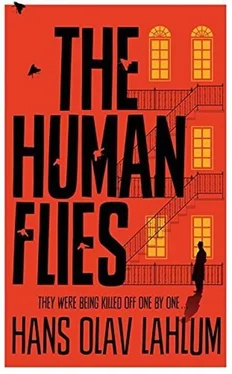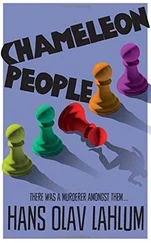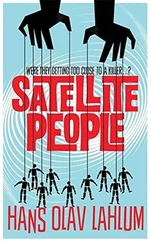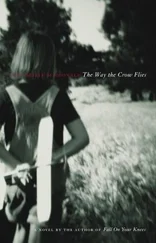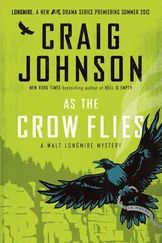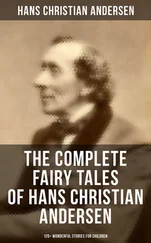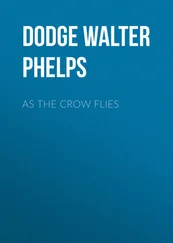It was only when I was halfway between Trysil and Elverum that it dawned on me that the discovery of Deerfoot’s age allowed for a possible new protagonist who thus far had remained on the periphery. But the impact of this was so powerful that I and the car almost ended up in a ditch. Despite my eagerness to get back to Oslo, I made an unplanned stop by the side of the road and looked through my papers. I was suddenly unsure of how old Harald Olesen’s nephew, Joachim, was. Was he older or younger than his sister? The tension grew when I saw in the census records that he was eighteen months younger than his sister, and was born in July 1928.
In February 1944, Joachim Olesen would have been fifteen years old. That fitted well, as did the close relationship he appeared to have had with Harald Olesen at the time. The relationship had clearly become more estranged latterly, which seemed reasonable if Harald Olesen had let his nephew down badly in winter 1944. Joachim Olesen could possibly have wanted revenge in relation to both his own and his sister’s experiences. What is more, he also stood to gain from the expected inheritance. And he had demonstrated that he had a quick temper and mood swings at the reading of the will.
I realized that an obvious possibility was that though the ‘D’ in Harald Olesen’s diary stood for ‘Deerfoot’, in reality it was his own nephew who stood behind the code name. The fact that Joachim Olesen had been present as himself in several other situations did not mean that he was not the man in the blue raincoat whom Andreas Gullestad had seen. And it fitted well that the raincoat had been found at 25 Krebs’ Street on the evening of the murder. It would be hard to place any more importance on the fact that his sister had more or less the same type of blue raincoat. But it did strike me as relevant and possible that the siblings might have bought the same type of raincoat, without her being aware of the significance.
However, the not-quite-so-minor practical problem remained as to how Joachim Olesen had managed to get in and out of the building on the evening of the murder without being seen. But as everything else seemed to fit so well, I felt that it was a problem that could be solved, for example if he was in cahoots with the caretaker’s wife or another of the neighbours. As for the murder of Konrad Jensen, I thought it was quite possible that Joachim Olesen had managed to sneak both in and out of the building unnoticed, either first thing in the morning or when the caretaker’s wife was out shopping.
By the time I passed Hamar, I was almost convinced, and as I approached Oslo, I had to stop myself from driving straight to Joachim Olesen to take a statement. But the practical problems remained, which meant that I kept my dinner appointment at the White House.
I made a brief stop at the office, where there were still no important messages waiting. The public seemed to have accepted that the case was closed following Konrad Jensen’s death. I made a quick telephone call to the caretaker’s wife in 25 Krebs’ Street, to make sure that everything was all right. Darrell Williams had come back at five to four in a taxi that sped up to the entrance, and had made a very odd comment to her about just having made it, despite the plane being delayed. Fortunately, I managed to thank the caretaker’s wife and put down the receiver before I released a smug laugh.
I made my dinner appointment with a ten-minute margin and arrived in an optimistic mood. Patricia, on the other hand, seemed to be more pessimistic. She played with the asparagus soup and, in between the first mouthfuls, looked sceptically at the photograph of Deerfoot from 1942. She was not able to get much from it either. The boy in the picture was young, and the image was also blurred. His hair was obviously dark, but the colour of his eyes and skin was not clear. Then she asked me to tell her the story from Sweden again, but more slowly this time and in some more detail. This took us through the rest of the soup and halfway through the roast pork.
It occurred to me that at times it might seem that Patricia had drunk too much cold water in her life. This impression was further bolstered by the fact that she drank six glasses during the course of the meal. At one point, I jokingly commented that Deerfoot, with his cross-country skiing, off-piste, combined and jumping, had covered half the Olympic programme. But this only raised a half-smile from Patricia, who added that the big question now was whether he was also a biathlete or not – and if he was, what, then, had he shot with?
In the middle of the main course, she asked a simple question, which was if I had at any point in the investigation seen a silver pendant similar to the one Deerfoot had round his neck in the photograph. With the proviso that I so far had had no reason to look for such a pendant, I told her that I could not recall having seen anything of the kind. Then I swiftly added that finding such a pendant so many years later might also be a shaky means of identification. She agreed with me, but then made the short and mysterious comment that the pendant may still be extremely important.
I asked Patricia what she thought might have happened on the fateful trip in 1944. She replied that it was difficult to know the details at this point, but that the bigger picture was relatively clear. From what they had been told, three soldiers and Sara Sundqvist’s parents had been killed during an exchange of fire. As was shown by his will, Harald Olesen had been dogged by guilt about this incident, both during and after the war. Following his death, Deerfoot was presumably the only person in the world who knew what had happened. The precise details were not so important at this point.
‘But I can more or less promise that Deerfoot will tell you all the details when we find him,’ Patricia added, with a glum and very serious expression on her face.
I noted straightaway that she had said ‘when’ and asked if that meant that she was sure that Deerfoot had survived the war and was still alive. She nodded firmly.
‘Despite his young age, Deerfoot appears to have been an unusually vigorous young man, even in 1944. To my knowledge, there is only one reason why a guide would choose to follow up at the rear, and that is when he fears being shot in the back. When Deerfoot agreed to go back with Harald Olesen, he took precautions. It would seem that any trust between them had been destroyed. I am now convinced first of all that the “D” in Harald Olesen’s diary really does stand for “Deerfoot”, and second, it is he who has been running around in the infamous blue raincoat these past couple of years. I also have little doubt as to his identity and address.’
I nodded in agreement. It was true – this fitted well with my theory about Joachim Olesen.
An oppressive silence followed, with close to ten minutes of expectant chewing. Ironically, it was only when ice cream was served for dessert that Patricia eventually thawed.
‘Please excuse me if I appear to be pensive. You have made great progress today. The murderer is just ahead of us now and we are catching up. By this time tomorrow, I hope that it will all be over, and I have a clear favourite as to whom it is who will be arrested. But we still lack answers to a few very important questions. It is such a frustrating situation to be so close yet not quite there. As you may have noticed, I hate drawing conclusions that may be wrong. I will therefore continue to mull on this theory in anticipation of the answers we will get tomorrow.’
Patricia paused for thought yet again and had an almost melancholy expression on her face when she continued.
‘The whole situation is so sad. Harald Olesen had done so much for his country and its people, both as a Resistance hero and a cabinet minister, and yet in the last year of his life, after his wife’s death and his retirement from public life, shadows from his past dominated. And in those final months he almost became a human fly himself. A group of human flies swarmed around him, with very intense feelings towards him linked to the past, all of whom could have had the motive and opportunity to murder him. In fact, at the time of Harald Olesen’s death, all of the residents of 25 Krebs’ Street could be described as human flies for different reasons. It is very depressing indeed.’
Читать дальше
